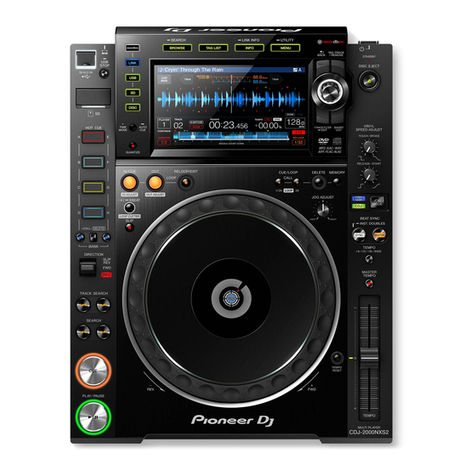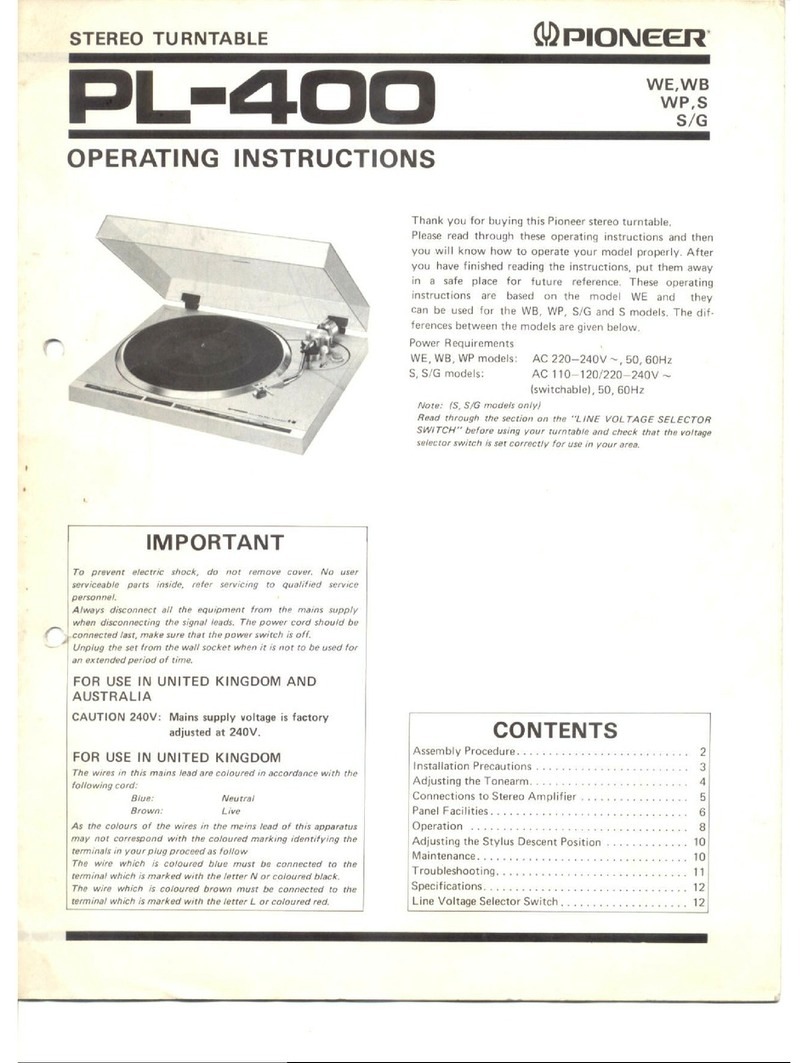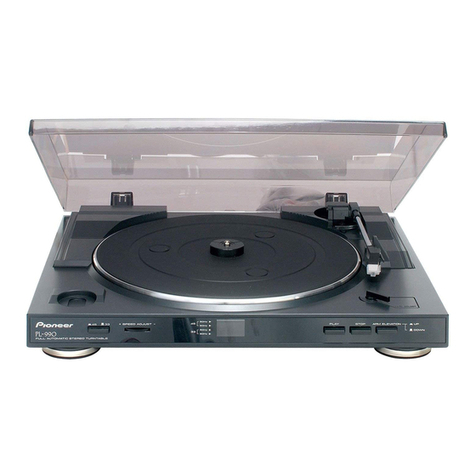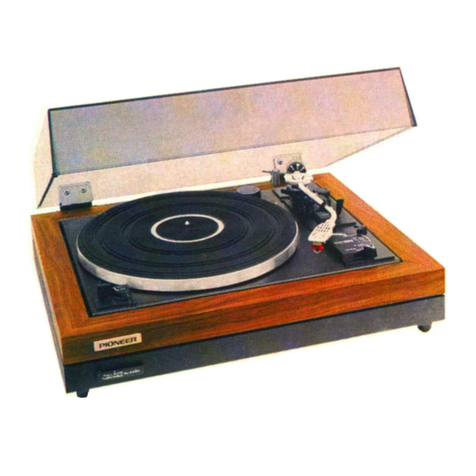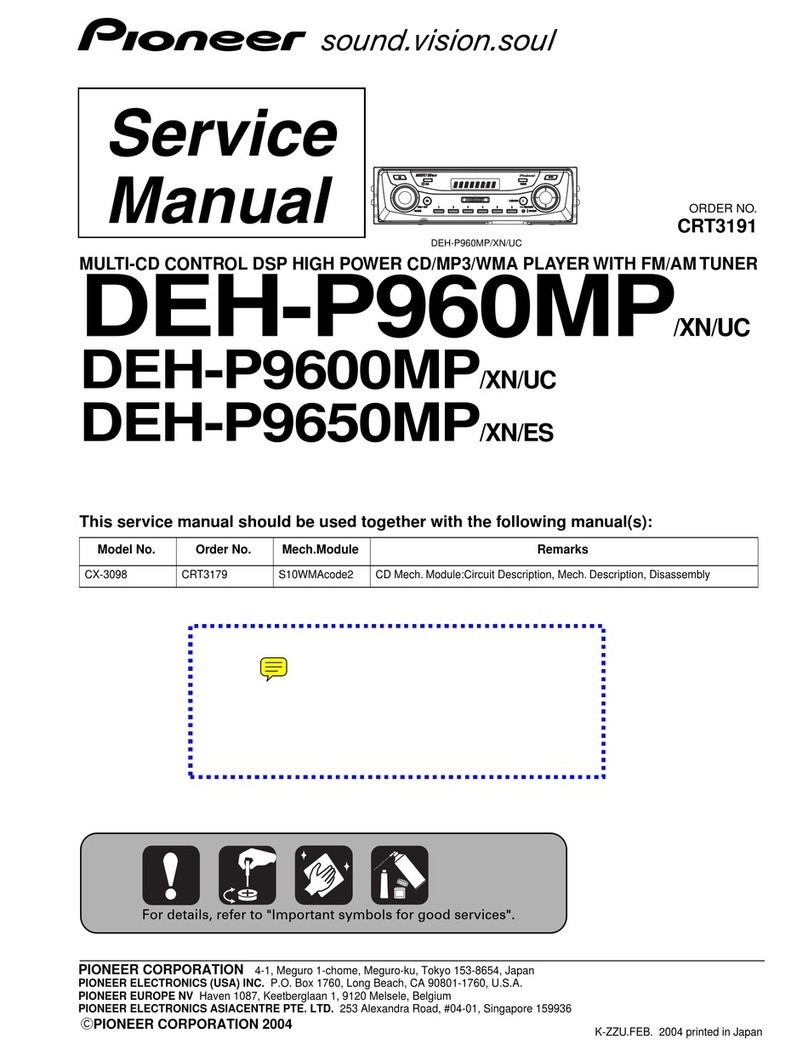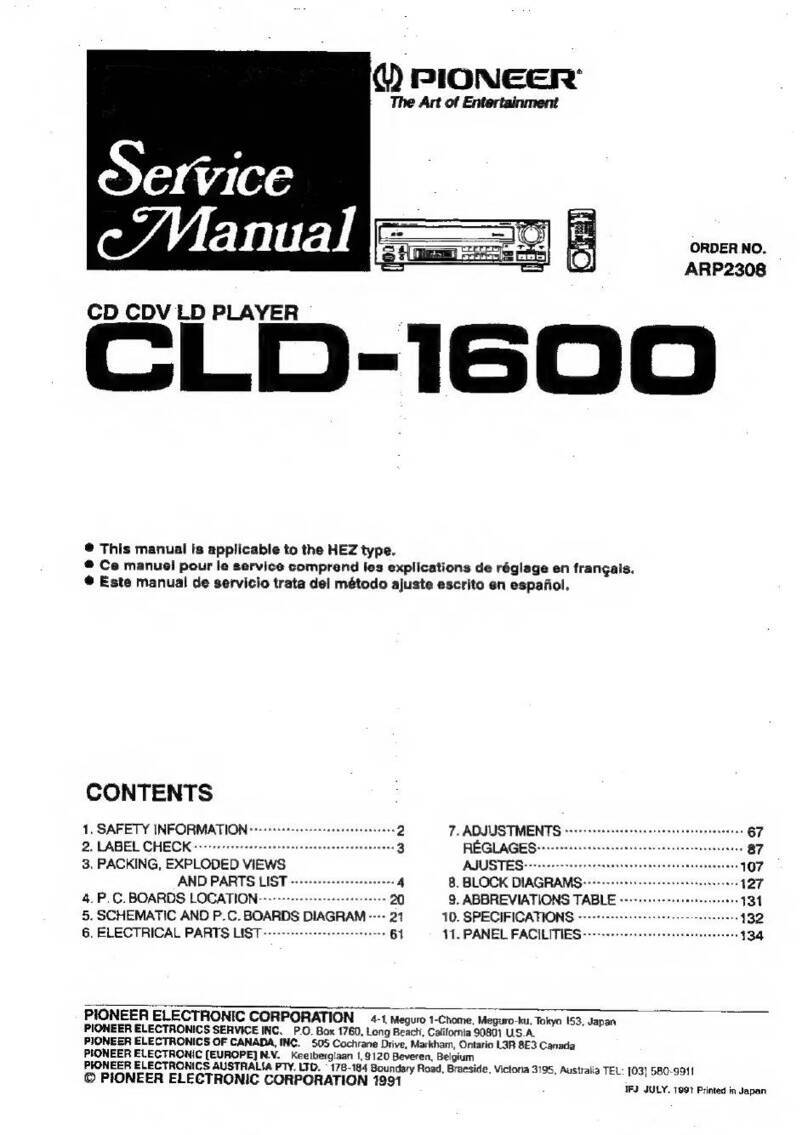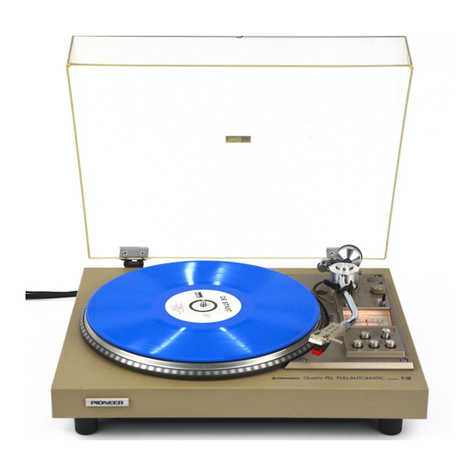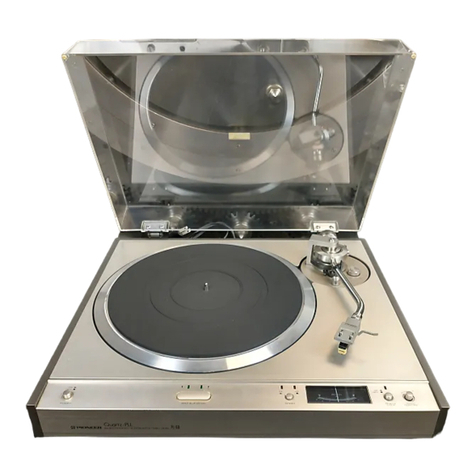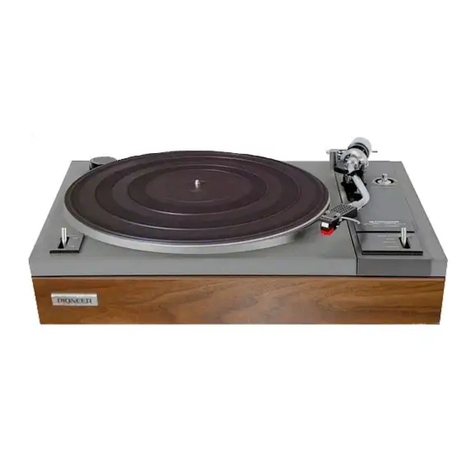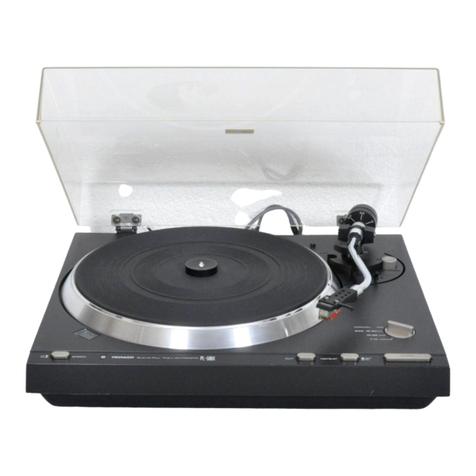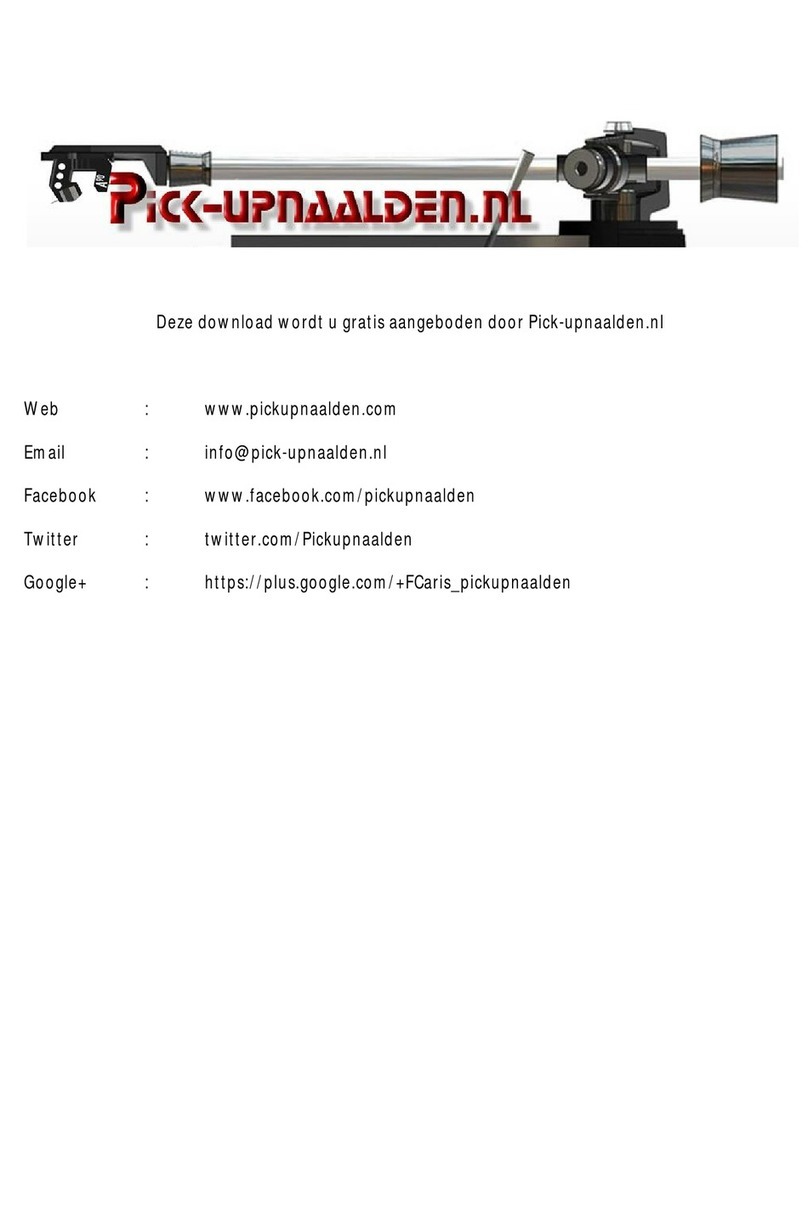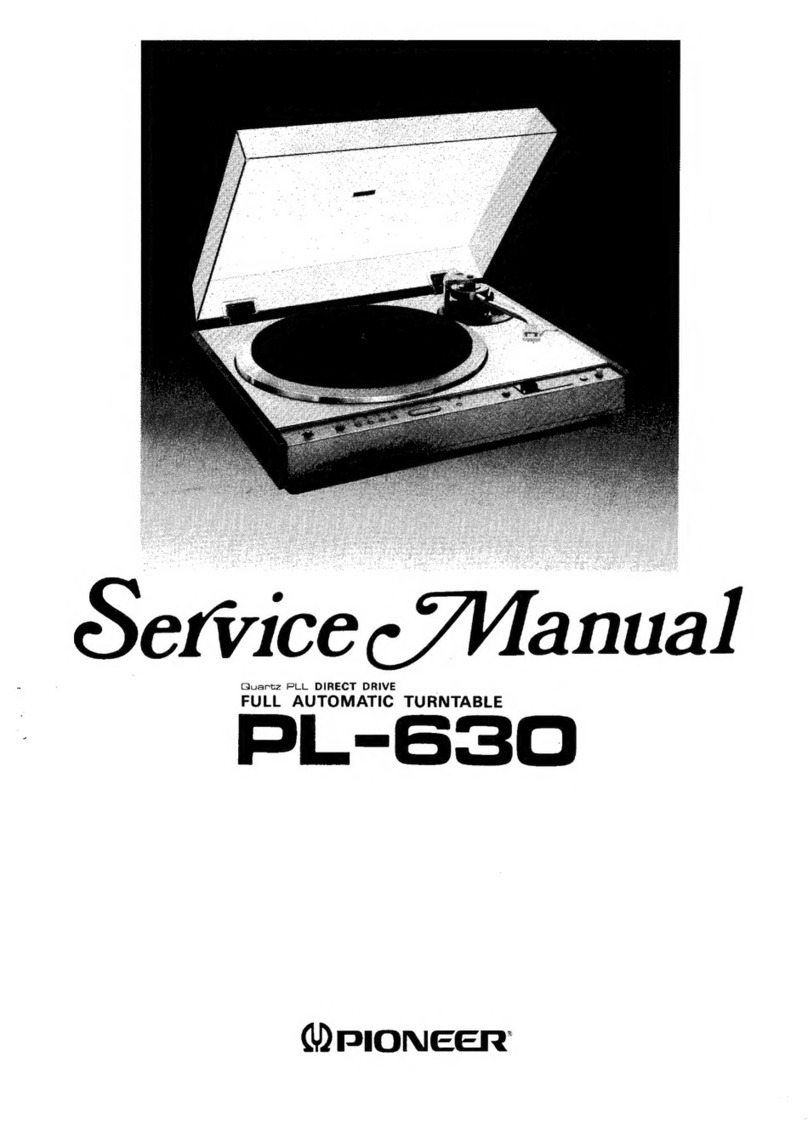
3. This signal passes
through D10 (peak hold
diode), and is applied to the differential cir-
cuit consisting
of C7, R30, and R31. This dif-
ferential circuit servesto convert the tonearm
position signalinto a speed
signal.
o Peakhold diode
Sewes to prevent misoperation due to ec-
centricity in the recorddisc.
4. As the tonearm stylus moves into the record
disc lead-out groove, its movement becomes
faster, and when the potential at point A rises
above approxfmately 0.6V, Q8 comes ON,
dropping the potential of the collector side.
This senresas an end sensorsignal sending the
number 8 and 9 pin of IC1 L.
5. When the tonearm is UP, transistorQ6 andQ7
prevent transistor Q8 from turning ON.
4.5 AUTO STOP
1. When the START/STOP button (switch 56)
is pressed
during record playback, the number
13 pin of.
IC2 goes
from L to H, and the num-
ber15pin goes
H.
2. Whenthe number 15 pin goes
H, the number 3
pin (number 8 pin) of IC3 also
goes
H, starting
the mechanism motor in the CW direction and
rcr ra8400tg
Full ruro control
940
arm returns to the armrest fing the opera-
enteringUP operations.
After UP operations are
tions listed in items 4 and
section,and the slide base
loadposition.
. ill "*o,",,o..*,tch twitch
3. . the tone-
e auto return
at the record-
Str)
in theUP
OFF
status,
r L. and the
mfter 1 pin of
mber 3 pin is
igtal input to
H, thereby
ber 2 pin
. the mecha-
turn CCW.
Pbut-
t{e ON posi-
15pin
pfn will go L
c$anging the
ber 2 pin
to L.
5!
INVERTER
it*n-.'r,*,..n it uP
on _ oFF
Irch ot _ oFF
rw,rch oil - oFF
Sl
OOWN complstioô
sirn ot _ oFF
oi - of,F
ot - oFF
uP - qg!-\
ON
_ OFF
rc 3 846206
MOTOR
DRIV€
âI
3
f_l
:
€
With the ARM button (
position and transistor Q1 in
the number 7 pin of IC2
number 2 pin is H, and the
IC1 is H. tn this status.the
held L no matter whether the
the number 2 pin of IC1 is
making it impossible for the
(number7 pin) of IC3 to go
nism motor therefore
At this point, when the ST
ton (switch 56) is switched
tion and the number 13 and
of IC2 goes
H, the number 1
turning transistor Ql ON
number 7 pin of IC2 to H,
to L, andthe number 1 pin
rc 2 M80aoa78
rc
4 H88401!8
REPEATCONT
Fig.
4-6 Autostop

